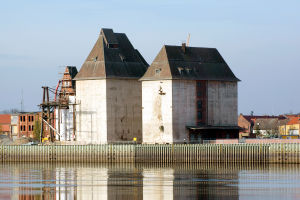Pottery is an art form that uses clay to make pottery. Its long history dates back to ancient civilizations thousands of years ago.
Using tools and techniques such as clay, a potter's wheel, a carving knife, and a baking oven, potters make pottery of various shapes and sizes, such as plates, bowls, vases, and teapots.
The potter can express his or her creativity and personality through the shape, size, color, and texture of the pottery. In addition to its practical value, pottery also has a certain artistic value and has become an integral part of people's lives.
In recent years, pottery has gradually become a popular handicraft and is well-liked by people.
The production process of pottery generally includes the following steps:
1. Preparation: prepare clay, a potter's wheel, a carving knife, a stirrer, water, and other tools, and knead the clay into a state suitable for making pottery.
2. Drawing: Place the clay on the potter's wheel and use the strength of your fingers and palms to gradually make the clay into the desired shape.
3. Shaping: Using carving knives and other tools as needed, the pottery is carved and trimmed to produce the desired shape and texture.
4. Drying: The pottery is placed in a ventilated and dry place, allowing it to gradually lose moisture and become hard.
5. Firing: The dried pottery is put into the oven and fired at high temperatures to make it harder and more durable.
6. Glazing: The pottery is glazed as needed to make its surface smoother and more beautiful.
7. Firing again: The glazed pottery is put into the oven again for high-temperature firing to make the glaze blend with the surface of the pottery to form beautiful colors and textures.
Pottery products have several advantages:
1. Durability: Pottery that has been fired at high temperatures is resistant to wear, corrosion, and heat, and is not easily damaged by prolonged use, some traditional teapots, bowls, and other pottery can be used for decades or even centuries.
2. Health and environmental protection: the raw material for making pottery is natural clay, which does not contain harmful substances and does not produce toxic gases during use, which meets the requirements of environmental protection and health.
3. Excellent texture: pottery has fine texture, strong permeability, smooth surface, rich color, and unique texture, which has certain artistic value and is an important part of traditional culture.
4. Good insulation effect: pottery has a relatively low thermal conductivity, which can keep the temperature of the items well, such as insulation cups, insulation bowls, and other pottery insulation effects is very good.
To sum up, pottery products have many advantages and are widely used in daily life and artistic creation.


